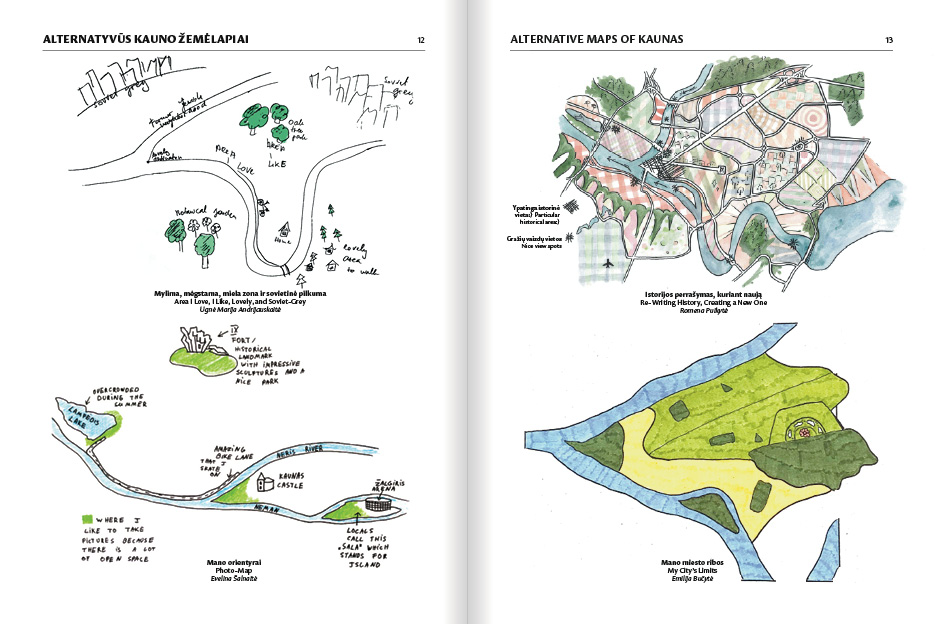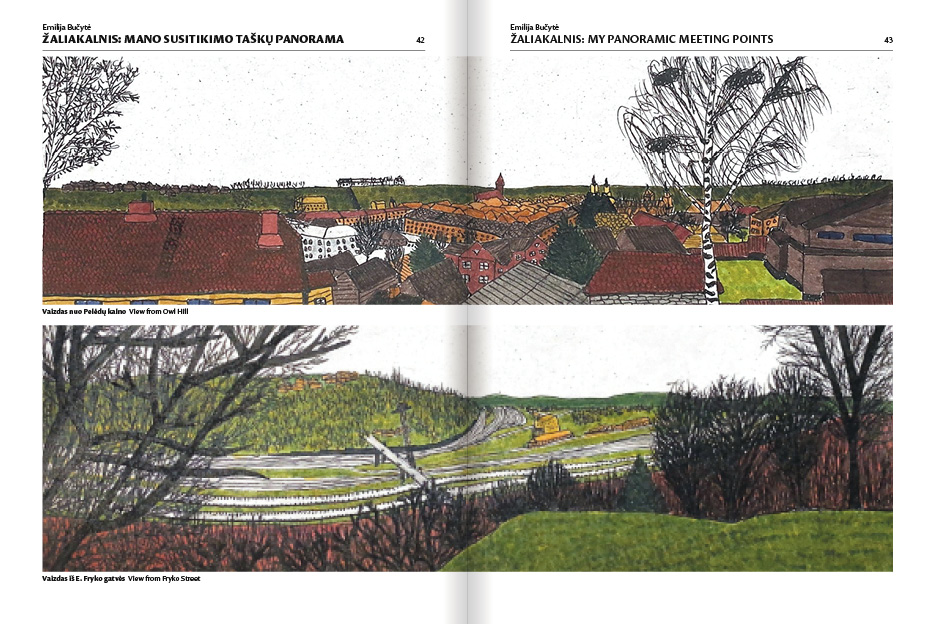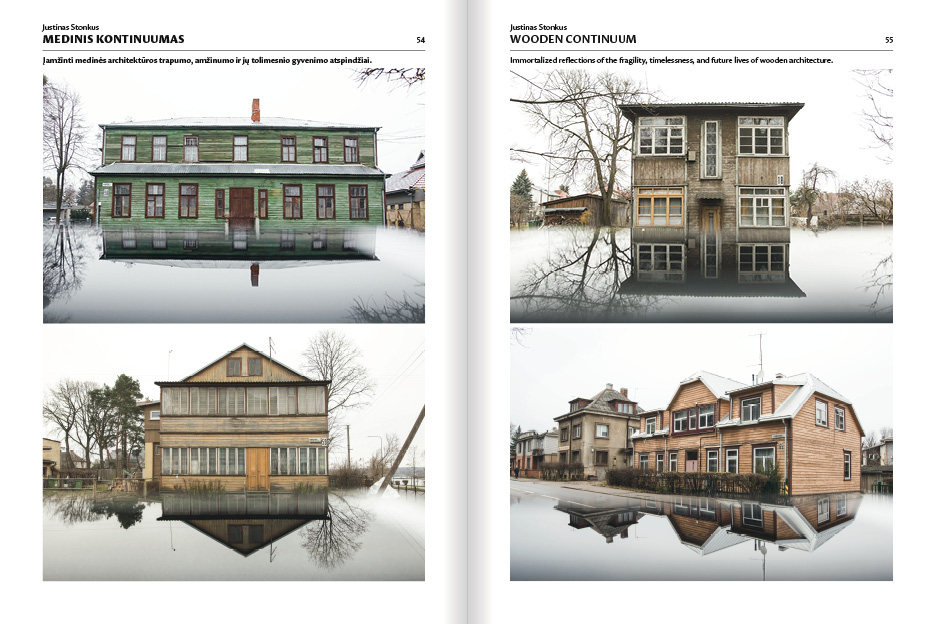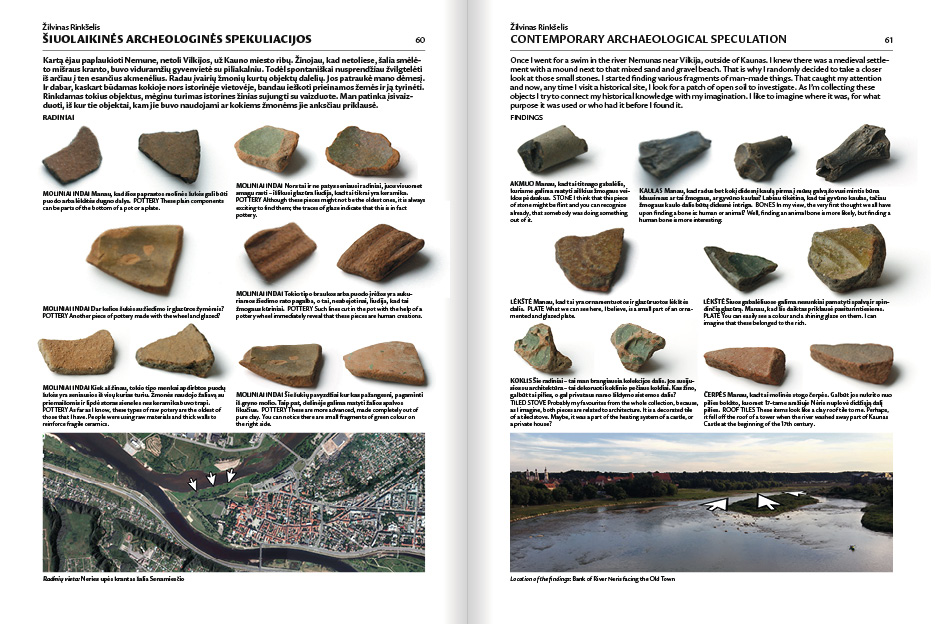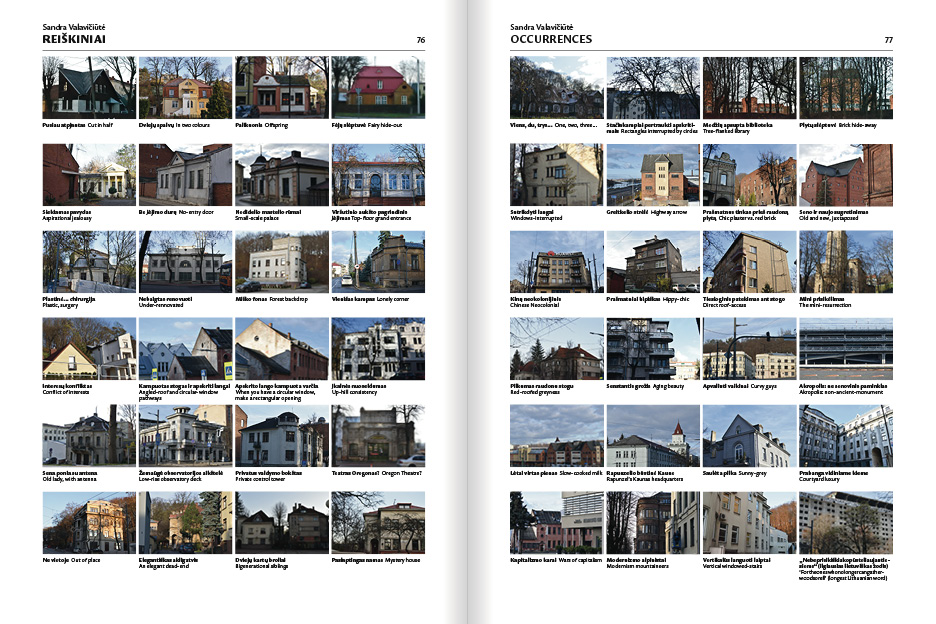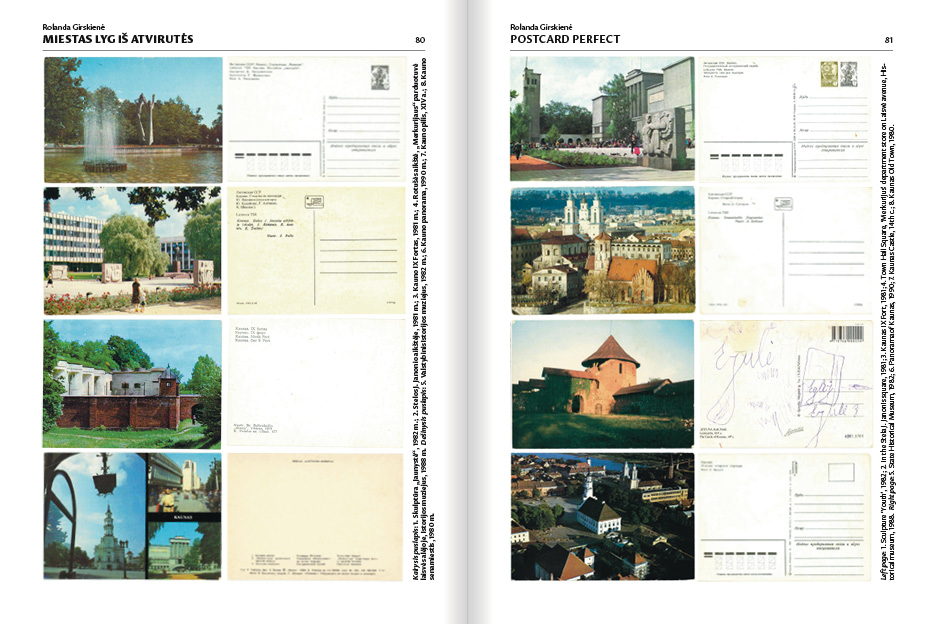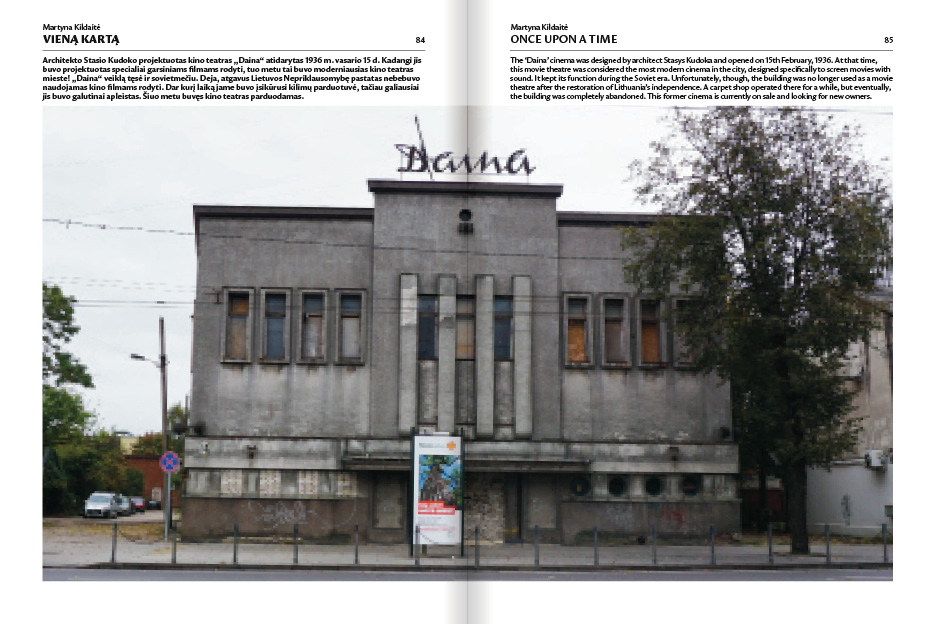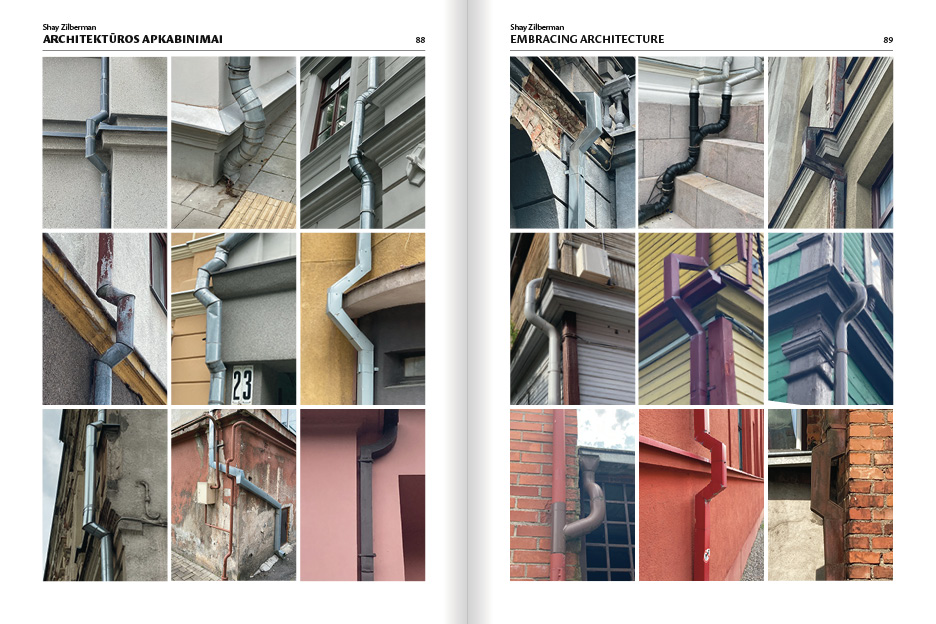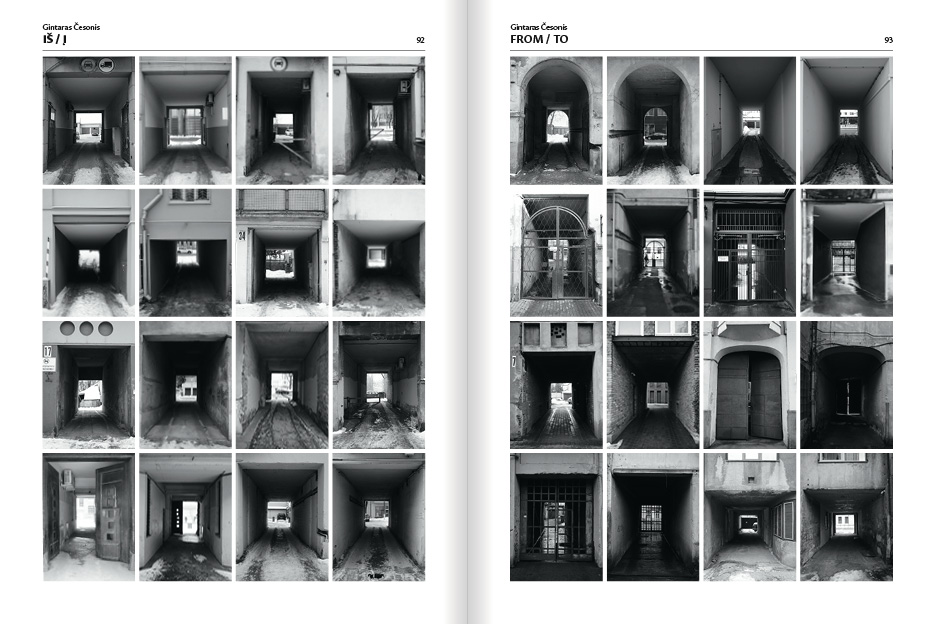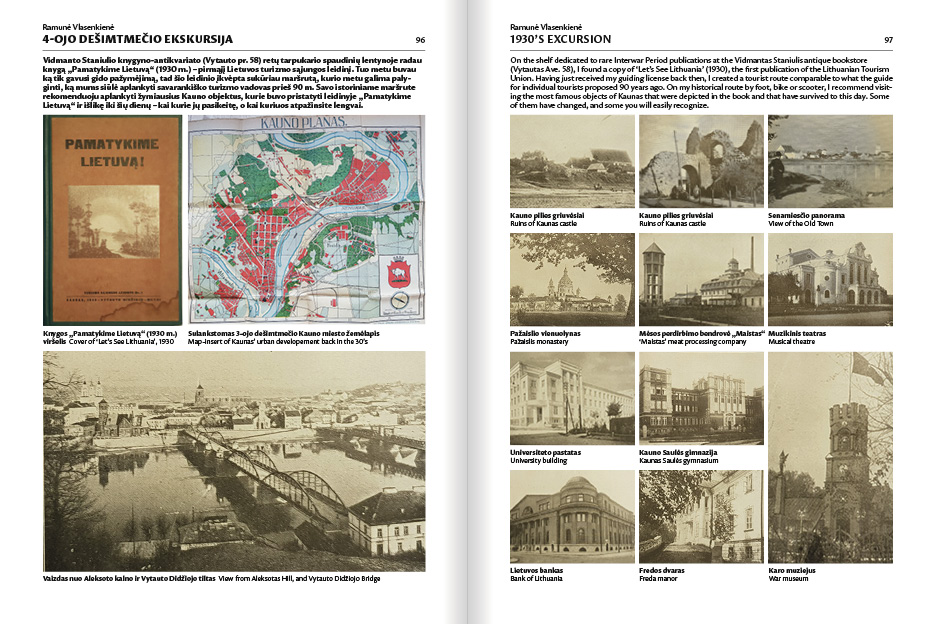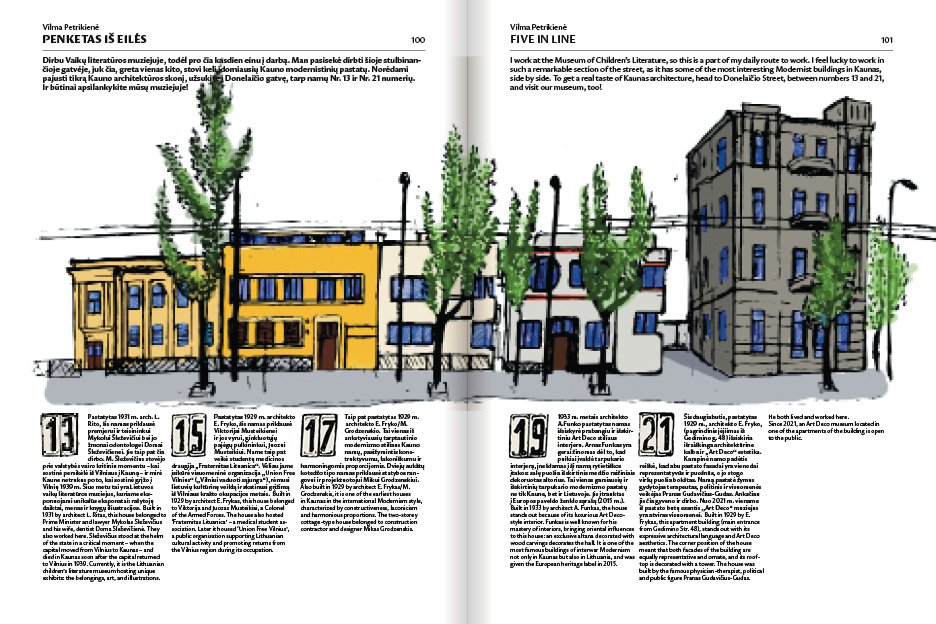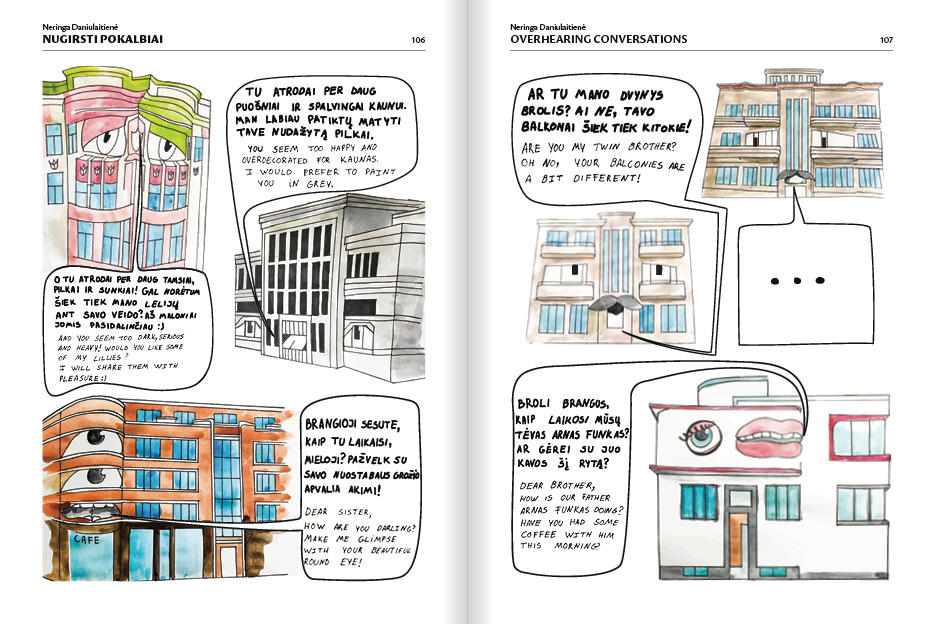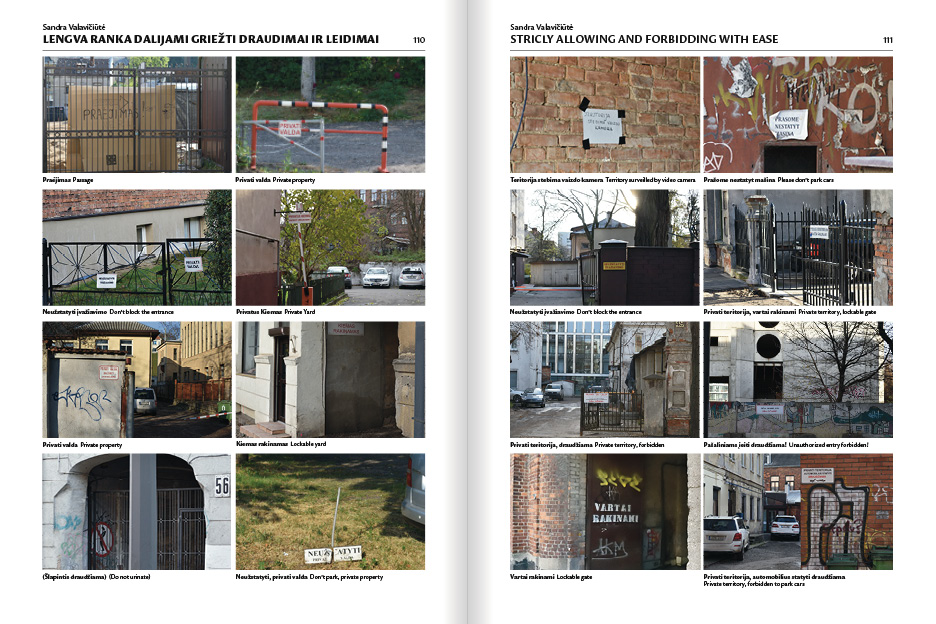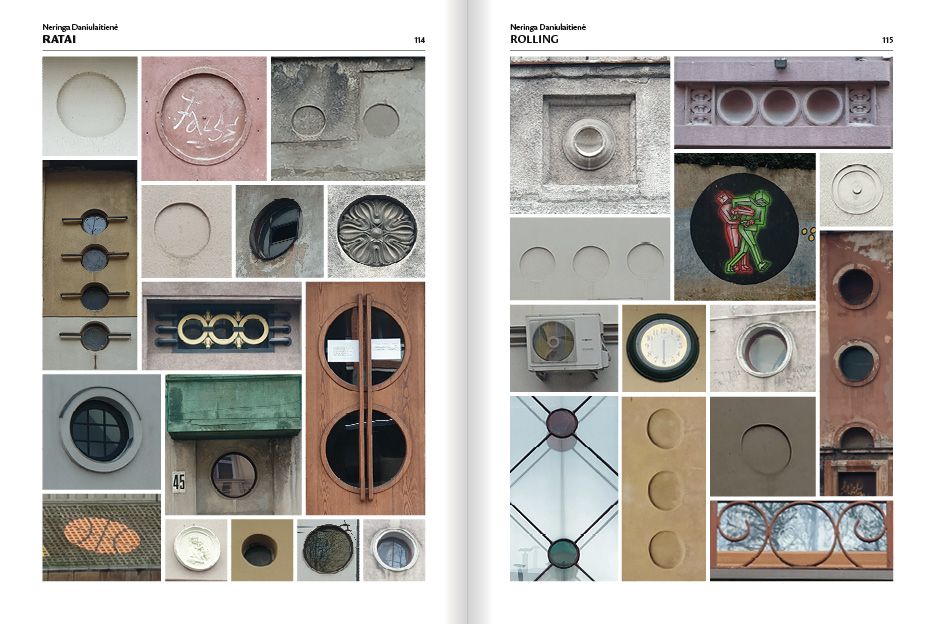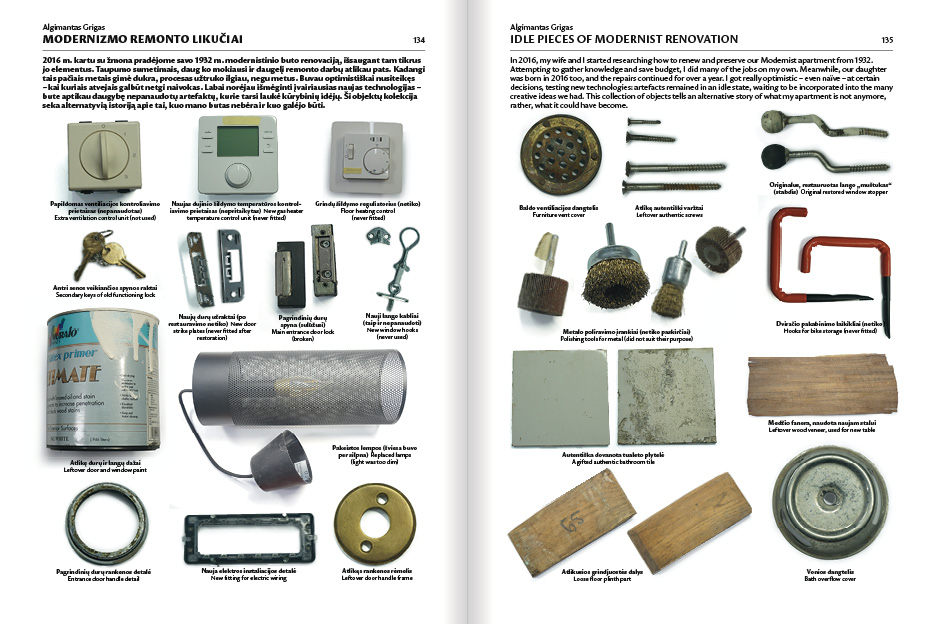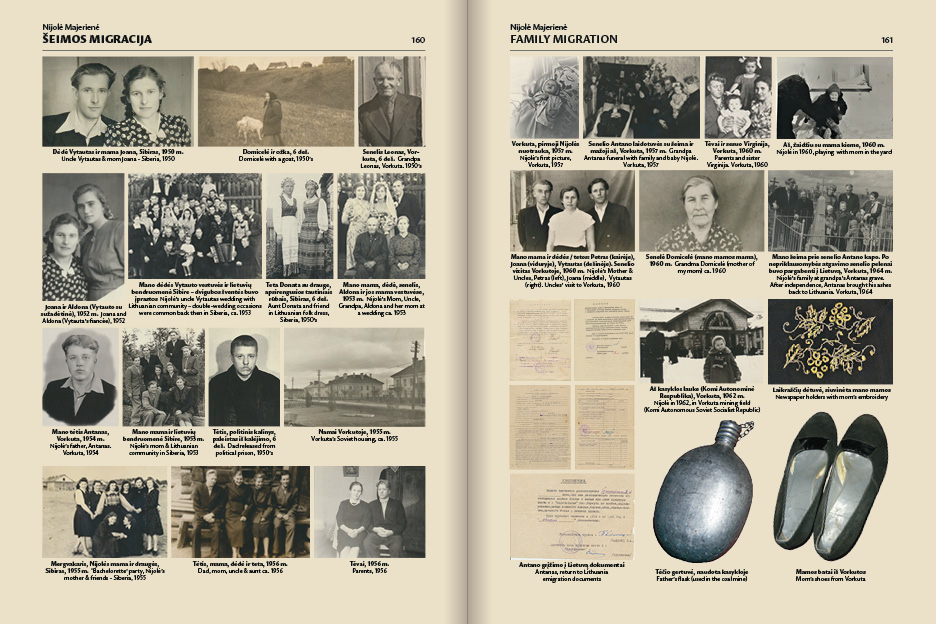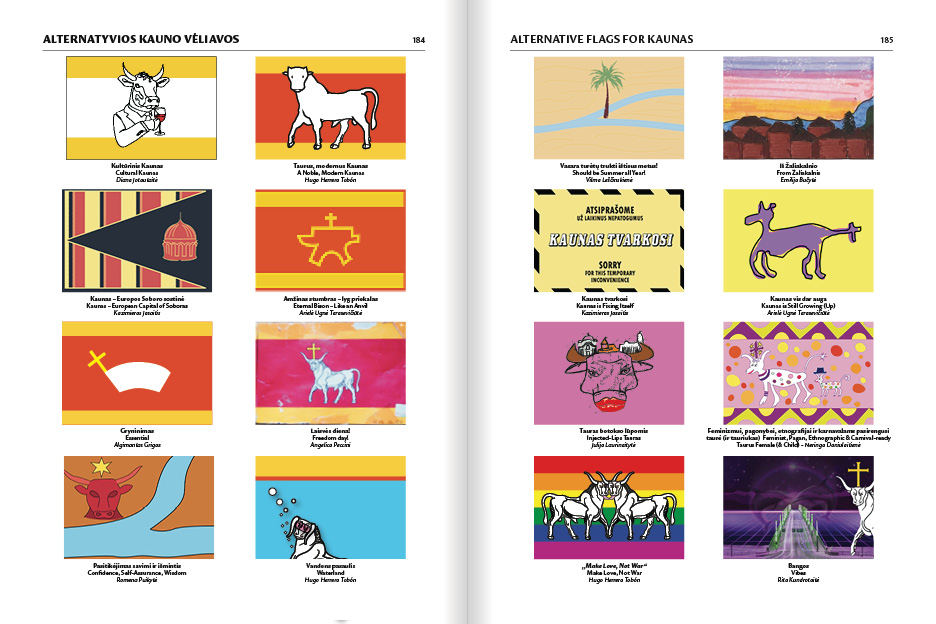«Temporalities of a macro-history in a micro-space:
As a city, Kaunas seems to be in a state of continuous transformation and construction. Walking around, you are likely to encounter one of the many construction sites and work being carried out in public spaces, or at least some warning signs. Talking to locals, you will probably hear about a street being renconstructed, a Modernist-era apartment being renovated, or a fountain or park being (re)built. Sometimes you might feel the urge to inquire about an unused or abandoned building – mostly from the Soviet era – that looks as if it’s crying out for new inhabitants or at least a brighter future. Kaunas makes me think about the fast pace and heavy traffic of its mostly grey avenues, which are juxtaposed with the massive Neris and Nemunas rivers that gallantly flow and reunite along the everchanging forests that densely flank the city.
It’s interesting to notice how many layers fit within this relatively small city. Kaunas feels like a small-scale invitation for a macro-historical reflection. An abundance of nature surrounds a medieval castle that swiftly introduces visitors to the centre of the Old Town, which fast-forwards you through centuries of historical events, legends and architectonic styles in a matter of just a few blocks. The neighbouring New Town displays a dense tissue of Modernist buildings and then unfolds once again into neighbourhoods filled with characteristic wooden houses, Modernist-era villas, or low-rise Soviet housing blocs, while an infinite number of intertwined staircases grab on to the hills. The city extends further into large areas covered by Soviet-era apartment buildings and housing projects that stand alongside more recent structures of all kinds. Some cities in Europe may have similar elements, but in Kaunas all you need is a single walk to get a good sense of its authentic multimodal character.
Such ubiquitous temporality seems to have become part of the city’s DNA, and might also find its recent roots in the events of the Interwar Period of the 20th century, when Kaunas became the temporary capital of the country.
The Kaunas 2022 slogan ‘From temporary to contemporary’ could not feel more appropriate in this context. Interestingly, through countless conversations with its residents, it became clear that Kaunas’ Modernism is not just an architectonic style of the past: it is also a symbol of pride, a way of living, a synonym for cultural production, a feeling of renewed optimism, and a spirit of novelty. It is a space for international influences, but mostly for local splendour: even national ethnographic motives and vernacular heritage proudly displayed a local influence back then, over the formalities of Modernist values that were imported from abroad and that drove Modernism towards the ideals of standardisation and uniformity elsewhere in Europe.
Likewise, the concept of time has also become an important subject in the creation of this book. The making of this Atlas took place during the unprecedented COVID-19 pandemic of 2020 and 2021, giving rise to a new form of temporality and space – both with its inherent challenges and interests – in the process of gathering all the materials collected in this book. It is also the first time that we make a Subjective Atlas with a historical timeframe as its focal point: while this book does not intend to become a nostalgic exaltation of the historical past of Kaunas or an inventory of all-things-Modernism about it, a myriad of perspectives came together to voice and reinterpret what it means to have such a vast modernist heritage when reflecting upon the city’s contemporary local identity.
Invited by Kaunas – European Capital of Culture 2022, a group of almost 40 citizens shared their personal interests, motivations, opinions, experiences, customs and domesticity, inviting us to reflect upon the identity of Kaunasians – not just Kaunas itself – and allowing us to create a fairly organic assembly of personal stories where contemporary perspectives on Modernism shed light on how this material and immaterial heritage is locally perceived, appreciated, disliked, lived with, lived at, observed (or even ignored), and associated with, or put into a much larger social and – despite the modesty and courtesy of most locals – even political perspective.
I hope that you will read both through the more apparent but also through the more subjacent lines and metaphorical meanings captured in the many mappings, images, graphs, and personal stories collected here. Together, they show what inhabitants see, and how they live, but especially how they feel, and how the ever-changing Kaunas undergoes its transformation in these globally turbulent times, all without forgetting its past.
The ‘Optimistic Kaunas’ of the Interwar Period that became a political and cultural centre for Lithuania, must keep constructing itself towards the future, so here I’d like to open an invitation to reflect: with material construction still ongoing, and amidst heated and relevant sociopolitical debates at the national and global level that range anywhere from pandemics to scientific innovation, traditional family values to LGBTQ+ rights, global warming to crypto currency economies, just to name a few, where will Kaunasians stand as a group and in Lithuania as a whole?
Could Kaunas’ bright past become an inspiration for a more inclusive future, where the intellectual and cultural transformation becomes once again the main engine of the city for its current and future residents? After all, what has Kaunas been, is, or will be without its citizens and the apparently immaterial asset of its sociocultural power?» — Hugo Herrera Tobón.

